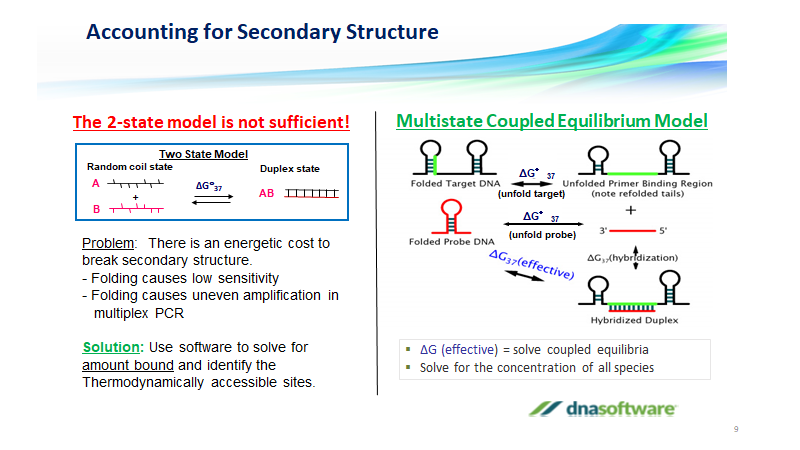What is Multiplex PCR?
Multiplex PCR can improve cost-effectiveness while saving consumable costs, precious sample, and overall processing time. However, meeting the metrics for highly specific multiplex amplification can be truly overwhelming for researchers. A successful multiplex assay must fulfill vital parameters such as uniform amplification of all targets under the same solution and thermocycling conditions, while retaining low limit of detection for all targets and minimizing primer-dimer artifacts, cross-amplification and off-target background amplification. Optimization of primer sequences, primer concentrations, salt concentrations, enzyme choice, and thermocycling conditions.

What are Advantages of Multiplex PCR?
- Cost savings in multiplex as compared to single plex
- Processing time for sample to answer result improved in multiplex PCR.
- Less sample required, saving sample resources
Empirial Multiplex PCR design approach
1. Start with optimization of individual single plexes.
2. Try to combine the singleplexes.
3. Then fix singleplexes that don’t work together, without knowing WHY failure occurred.
Note :This design strategy is suboptimal, costly, timely and inefficient. It is not unusual to have a 7-plex PCR working only to have it completely fail when an 8th primer pair is added.
How to design a Multiplex PCR?
1. Multiplex PCR is a complex system, with many interacting variables.
2. Percent Bound is a key metric. Researchers often focus on matching Tm ( melting temperature ) and design primers with similar Tm. However, the hybridization behavior at the Tm is not the same as the behavior at the annealing temperature. The quantity that is important for PCR design is the amount of primer bound to target at the annealing temperature.
2. Cross-hybridization can cause artifacts. BLAST is limited in its ability to detect false amplicons *
3. Limit primer dimers through prediction with appropriate tools that incorporate multistate coupled equilibrium, see Fig 1.
3. The individual PCRs are optimized to work at different conditions.
4. The amplicons are amplified at different rates, such that one amplicon can take over the reaction.

Fig 1: Multistate Coupled Equilibrium Model.
*see Click here
What are the limits of Trial and Error-based Multiplex PCR Design?
- Experimental PCR design is a lengthy, iterative, and complicated process
- Can result in optimal assays that fail in the validation process to inflate product development costs and discovery timelines.
- A successful multiplex assay must fulfill vital parameters such as Stable relative primers and DNA, magnesium chloride balance, cycling temperatures, and the right amount of template and Taq polymerase. Correctly blending buffer concentration and annealing temperatures are vital to highly specific amplification;
- Design failures can cause amplicons to amplify at different rates, leading to false, unequal, or no target amplification.
- Design of specific primer sets is essential for a successful multiplex reaction and using “free software” and software with 2-state model limits chances of successful in-silico multiplex design.
Multiplex Panel Design for Next-Generation Sequencing (NGS) Requirements:
- Uniform amplification is vital for enriching the targets for next-generation sequencing (NGS) requiring high-level multiplexing, particularly greater than 100-plex.
- Accurate multiplexing is indispensable to meet the spectrum of clinical diagnostic requirements. An incorrect PCR design leads to false negatives due to targets’ secondary structure, false amplification, improper primer-amplicon interaction, and unimolecular extension.
- False positives also result due to cross-hybridization and low primer design specific problem of covering each target’s multiple variants, as well as numerous targets, challenges PCR designing.
Multiplex PCR Primer Design with PanelPlex™
PanelPlex™ is the result of more than 15 years of investigation into the mechanism of PCR (Polymerase chain reaction) and careful experiments to identify the sources of failure of PCR. PanelPlex™ has been rigorously validated for the detection of numerous viruses, bacteria and human targets.

